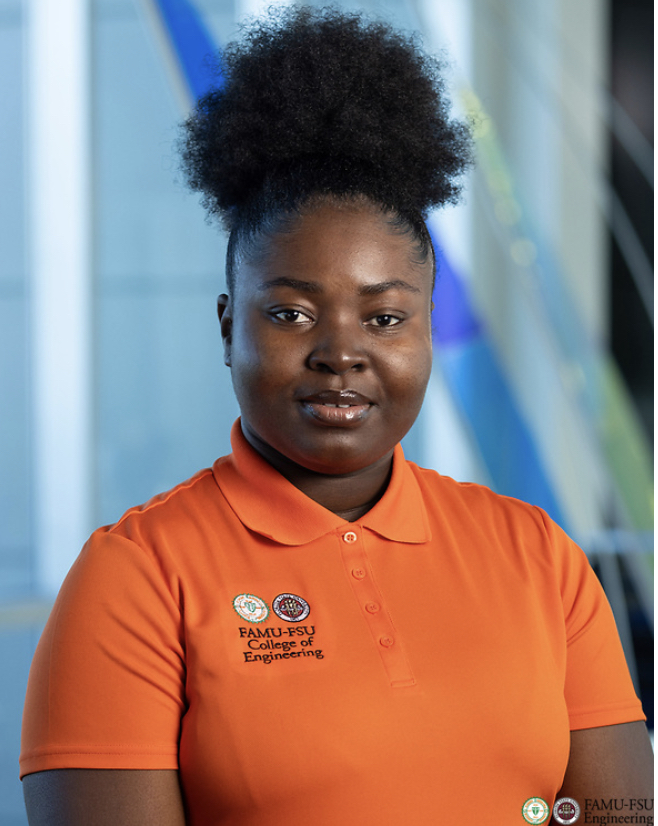Research Symposium
24th annual Undergraduate Research Symposium, April 3, 2024
Elizabeth Ameyibor Poster Session 1: 9:30 am - 10:30 am /204

BIO
Hello, I am a sophomore majoring in biomedical engineering. My research interest includes prosthetics, pharmaceuticals and maybe a step into biotechnology. Some of my hobbies include reading, crocheting and watching soccer.
Habitat Characterization of a Mid-Pacific Mountain Across Depth
Authors: Elizabeth Ameyibor, Sierra LandrethStudent Major: Biomedical Engineering
Mentor: Sierra Landreth
Mentor's Department: Earth, Ocean & Atmospheric Science Mentor's College: Florida State University Co-Presenters: Madeline Schmidt
Abstract
The deep sea is one of the least explored ecosystems on Earth. Only about 5% of the deep ocean is examined in detail, often through deep-sea ROVs documenting the sea floor thousands of meters below the surface. Our research aims to analyze one site within the Mid-Pacific Mountains to determine the overall substrate size, composition, and species diversity at differing depths.
Our research focused on two dives, which explored parts of the east side of these underwater seamounts. A ROV collected video transects across site Mid-Pacific Mountain #3 (MPM3) at different depths. Each video transect was converted to 30-second interval screen grabs, and we annotated characteristics of habitat that are known to affect deep-sea coral and megafauna assemblages on seamounts. Singular images from different transects were observed and annotated for the approximate surface area, rugosity, and laser points. Lastly, we randomly selected 15 points from each image and identified different types of substrates and marine life found on and around these seamounts. While there is still extensive data left to annotate, this study has found that the habitat characteristics of site MPM3 can range in various places. Numerous filmed locations contain different types of substrates, rugosity, etc., indicating a diverse underwater ecosystem.
Our experiment contributed to characterizing relatively unexplored seamounts in response to depth. Analyzing these vulnerable marine ecosystems at different depths will help with future research on the deep sea, which should continue to be investigated, as our data only covers one small section of the Mid-Pacific Mountains.
Keywords: Seamounts, mid-Pacific, sea exploration


